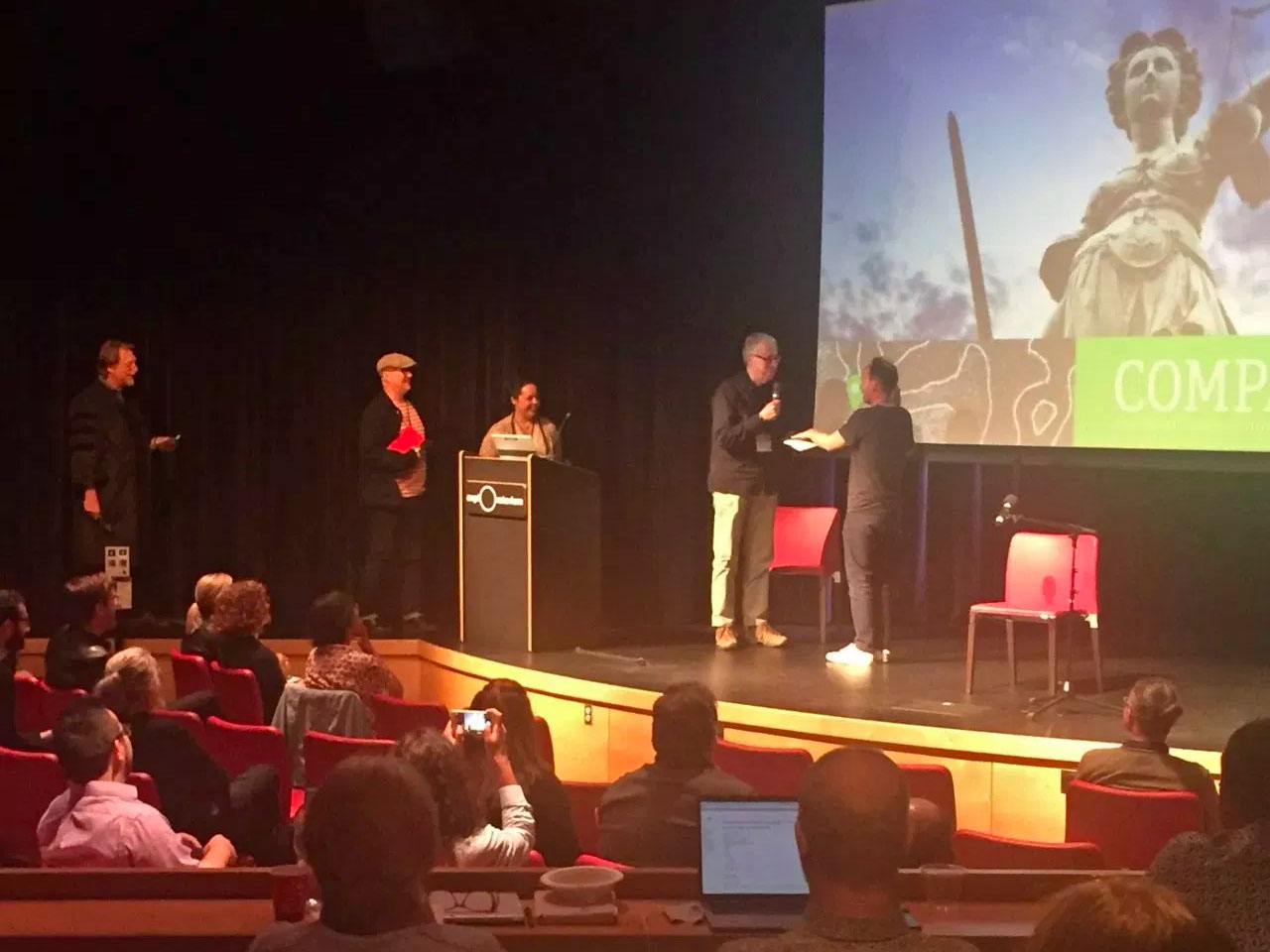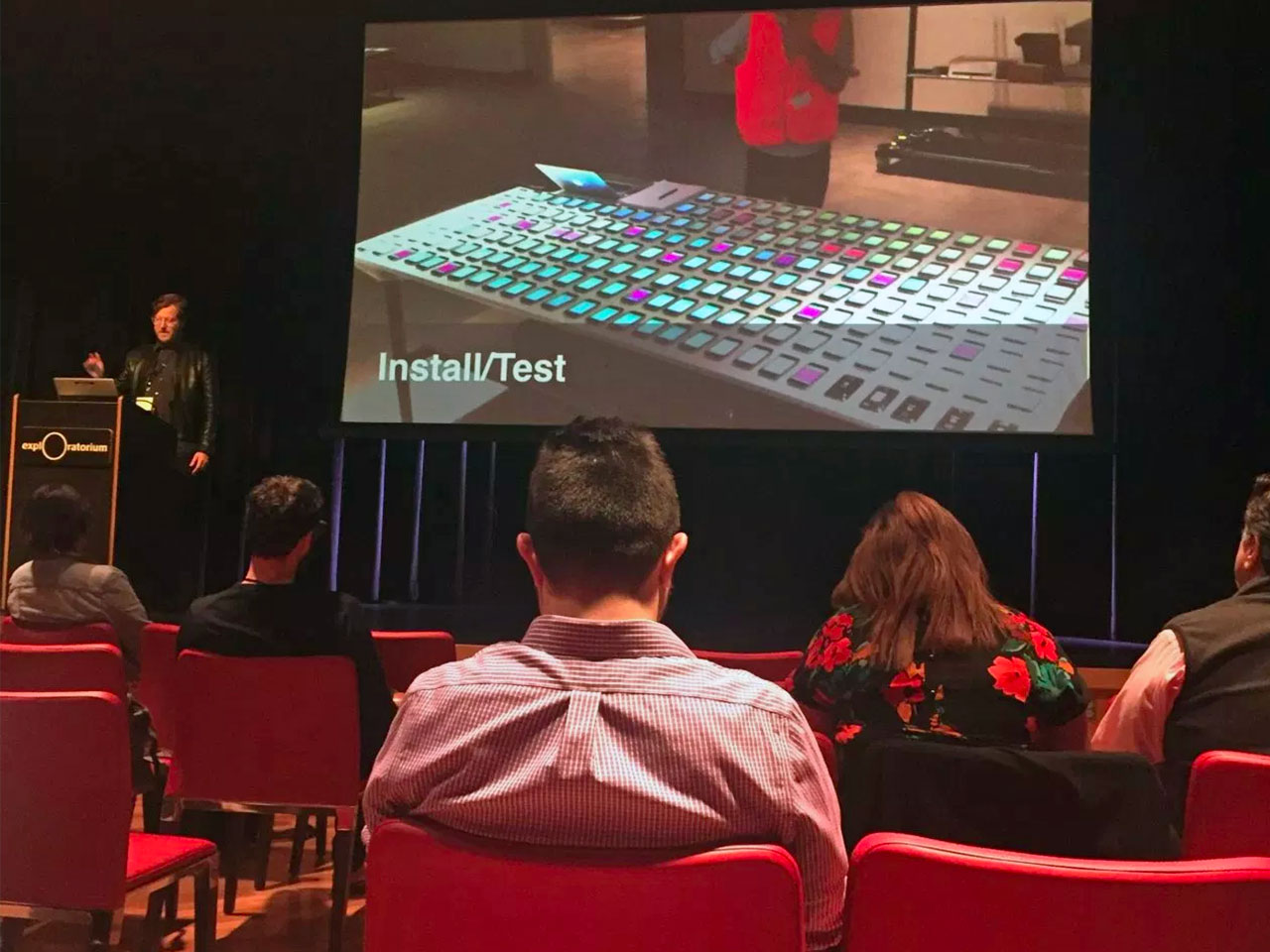Imagine being guided by a buzz on your smart watch, suggesting you try a different path in the museum you’re visiting. Or your mobile device that knows your favorite types of activities nudging you to move outside your comfort zone and explore new genres of art or recommending the next curiosity to examine.
The Conference on Mobile Position Awareness Systems and Solutions (COMPASS) convened over 80 museum staff, technology developers, cyberlearning scientists, STEM informal learning specialists, and others interested in indoor location-aware mobile systems to flesh out these ideas and more.
Held at the Exploratorium in San Francisco, and organized by Program Director Claire Pillsbury, the conference was supported by the National Science Foundation to examine intersections, find critical gaps, and identify new territories. Participants, including some who traveled from Australia and the United Kingdom, shared firsthand accounts, design experiments, artistry, and research studies about their experiences making mobile content apps and configuring location-aware infrastructure and tracking technologies for museum audiences and beyond.
I enjoyed meeting old and new colleagues whose work I have admired, including Seb Chan who co-designed the Pen at the Cooper Hewitt Design Museum; interaction design scholar Yvonne Rogers from University College London; and Jen King, Director of Privacy at Stanford’s Center for Internet and Society. One playful session included a mock trial presided over by Judge Robert Semper, bailiff Dennis Schatz, prosecutor Leilah Lyons from NYSCI, and defense attorney Dave Patten from the Science Museum, London. Witnesses were brought to the stand to testify in relation to the charge: Indoor location-aware mobile technology is “fake tech.”
I had the opportunity to also reflect on research initiated almost 20 years ago by Robert Semper and Robert Tinker, who pioneered the early uses of Wi-Fi networks and Electronic Guidebooks at the Exploratorium in a project funded by the National Science Foundation. In 1999, they collaborated to forge new ways to support and extend inquiry-based learning using information nuggets delivered from pocket computers and data from probeware. Mobile computers were the mediating device that connected the rich phenomena-based exhibits of science museums to school classrooms and the outdoors.
At the same time, the HP Labs Cooltown project pioneered the combination of RFID-triggered cameras, wireless clamshell mobile computers, and infrared beacons with HP handheld computers into exhibit stations that could bookmark a visit to the museum and capture a personal collection of photographs for later viewing. Intel Research Labs Seattle was also working on wireless transceivers for ubiquitous computing. The key to such examples of “learning everywhere” was to both engage a learner in deeper inquiry and experimentation while at the science museum and to extend inquiry into an investigation at school or home.
Our Learning Everywhere initiative, supported by generous a grant from the William K. Bowes, Jr. Foundation, is exploring, prototyping, and creating new learning experiences—including exhibits, mobile apps, and user tracking technologies—that connect and coordinate learning across museums and bridge in-school and out-of-school time.
Today, mobile devices, Wi-Fi services, and intelligent interfaces have blossomed to enable real-time location and delivery of personalized media content, as well as ways to contribute and publish user voices in real time, as we learned at COMPASS from Halsey Burgund from roundware.org and Niranjini Rajagopal from Carnegie Mellon University. Location-aware computing systems with geomagnetic sensors, sensor fusion, and ultra-wide band radio can track and pinpoint user locations, while continuously processing user activity data and monitoring interactions. Paired with artificial intelligence, these technologies aim to glean a user’s context from this tracking data and anticipate their actions and intentions to better shape and enhance user experiences. Your next museum visit could take you to more places than you’d imagined.
 Mock trial.
Mock trial.
 Small breakout group to discuss the big questions.
Small breakout group to discuss the big questions.
 Scott Brewer from Art Processors testing multiple mobiles before introducing the new app into a museum.
Scott Brewer from Art Processors testing multiple mobiles before introducing the new app into a museum.
 Broader contexts for location-aware positioning systems panel.
Broader contexts for location-aware positioning systems panel.